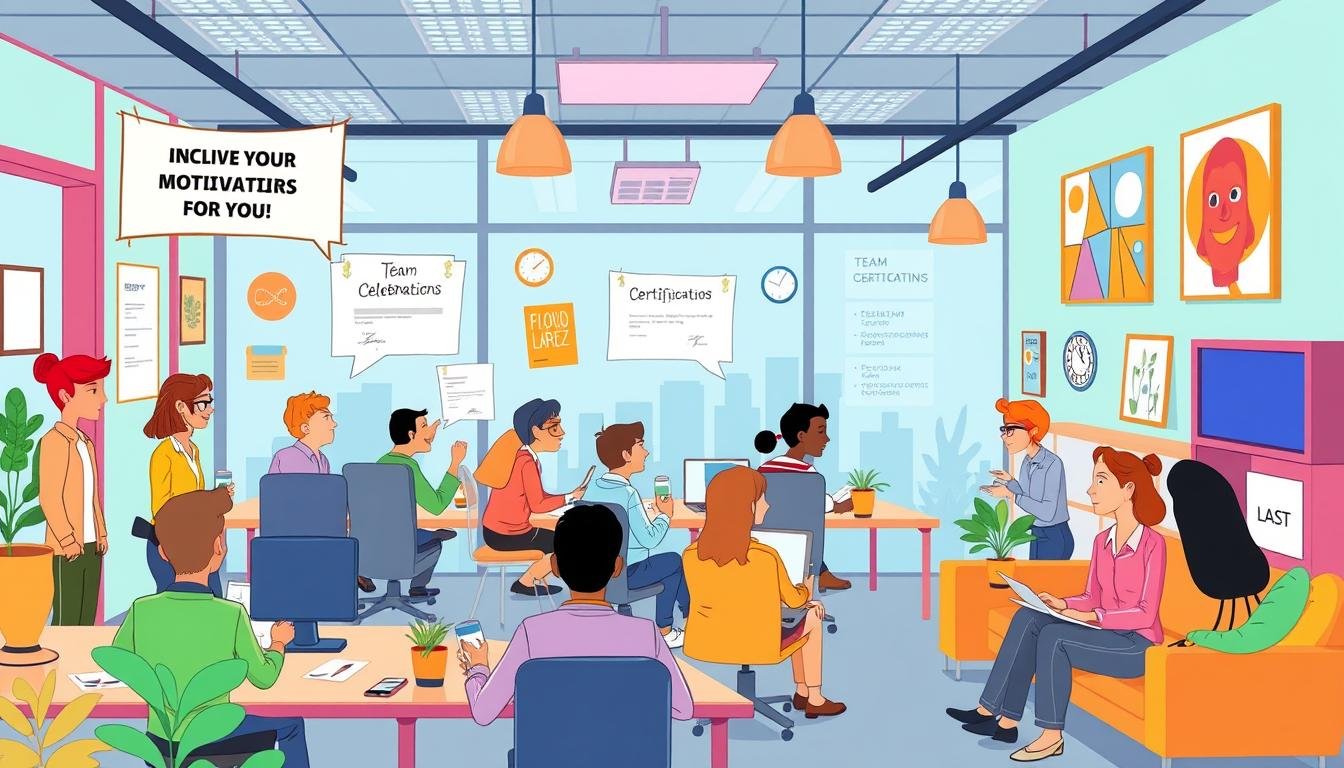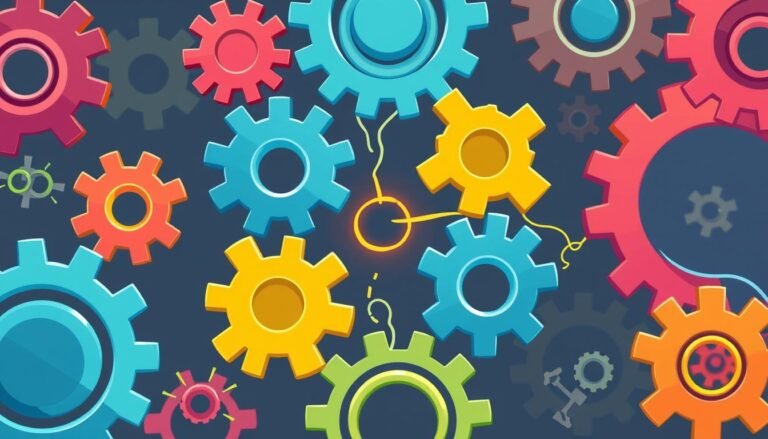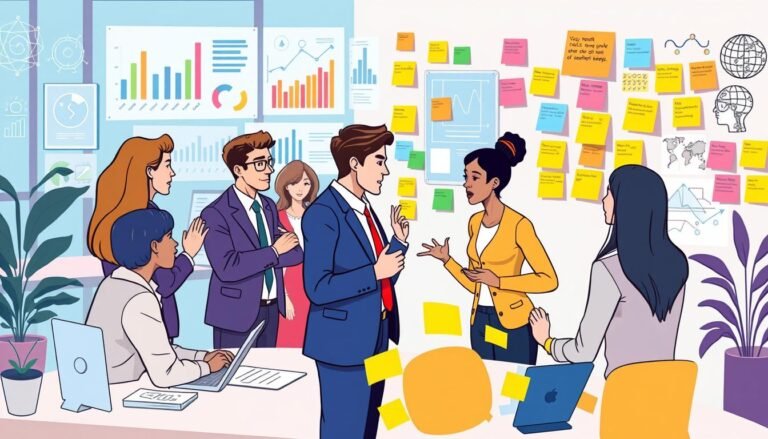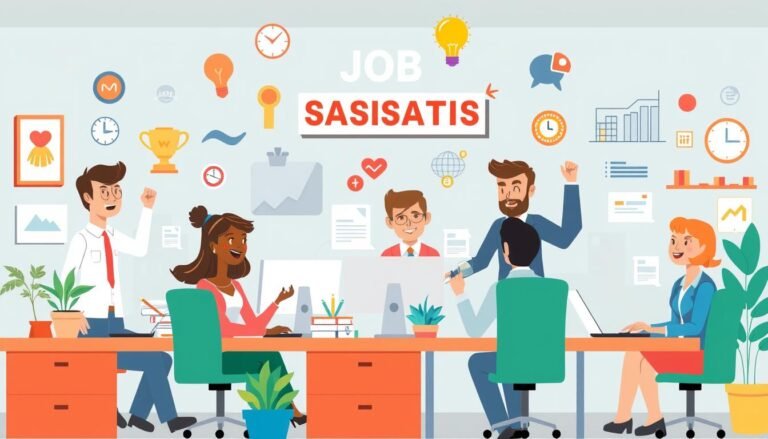Reward Systems That Work: Psychological Principles to Motivate Employees
Ever wondered why some companies keep their employees so engaged and productive? It might be their reward systems. Smart businesses use psychological principles to create effective incentive programs. Let’s explore how these strategies can improve your team’s performance and loyalty.
Imagine a workplace where employees can’t wait to come in every day. It’s not just a dream. Research shows that good incentive programs can increase productivity by 22%. But it’s not just about giving out money. The real magic happens when you combine psychology with performance-based rewards.
Team-based incentives are often more effective than rewards for individuals. They tap into our need for belonging and success together. And here’s something interesting: long-term programs usually work better than quick fixes. It’s about building a culture of ongoing achievement and recognition.
Timing is also key. Our brains love to make connections, even when they’re not obvious. So, rewarding an employee right after they’ve done great work links the good feeling to the task. It’s like training a puppy, but with less kibble and more job satisfaction.
Key Takeaways
- Incentive programs can increase workplace productivity by 22%
- Team-based rewards often outperform individual incentives
- Long-term programs yield better results than short-term fixes
- Timing rewards close to achievements enhances their impact
- Non-monetary rewards can be effective when used strategically
- Aligning rewards with company values reinforces desired behaviors
Understanding the Psychology of Employee Motivation
Employee motivation strategies are key to success at work. Knowing the psychology behind motivation helps companies create rewards that boost productivity and happiness.
Self-Determination Theory and Intrinsic Motivation
Self-Determination Theory says employees are driven by what’s inside them. Rewards that match personal values and goals make motivation high. This knowledge helps create rewards that really speak to employees.
Social Comparison Theory in the Workplace
People compare themselves to others at work. Social Comparison Theory explains this. Exclusive rewards, like leaderboards, tap into this natural urge, sparking healthy competition.
The Role of Self-Efficacy in Employee Performance
Self-Efficacy theory shows how believing in oneself matters. Recognition programs boost this confidence, leading to better work. By celebrating achievements, companies build a sense of competence in their team.
“Interesting work, good wages, and full appreciation of work done are the top three motivating factors for employees.”
Grasping these psychological principles is the first step to making great reward systems. By matching incentives with what employees value, encouraging positive comparisons, and boosting self-confidence, companies can create strong motivation strategies. These strategies drive success.
The Power of Achievement-Based Rewards
Merit-based rewards and performance-based compensation tap into employees’ desire for recognition. These systems boost morale, increase productivity, and foster loyalty. Research shows that long-term incentive programs yield more significant performance gains compared to short-term ones.
Achievement-based rewards come in various forms:
- Cash bonuses
- Promotions
- Increased responsibility
- Flexible work arrangements
- Paid time off
Implementing a well-designed merit-based reward system can drive remarkable results. Studies indicate that 81% of employees work harder when their boss shows appreciation. This highlights the importance of recognition in motivating staff.
Performance-based compensation aligns employee actions with company goals. It encourages continuous improvement and innovation. When rewards are tied to specific outcomes, employees focus on achieving targets that benefit the organization.
| Impact of Achievement-Based Rewards | Percentage |
|---|---|
| Employees leaving due to lack of appreciation | 79% |
| Increase in engagement when rewards meet needs | 700% |
| Employees motivated by boss’s appreciation | 81% |
To maximize the effectiveness of achievement-based rewards, consider implementing a points-based system. This approach increases reward frequency and generates measurable data to evaluate efficiency. It saves time through automation and fosters team camaraderie when combined with point pooling for group achievements.
“Public recognition is ranked higher than private recognition, promotions, and salary increases.”
By strategically implementing merit-based rewards and performance-based compensation, companies can create a culture of excellence and appreciation. This leads to enhanced employee satisfaction, reduced turnover rates, and improved overall organizational performance.
Implementing Gestalt Theory in Reward Systems
Gestalt theory, from the 1920s, helps us understand how to reward people well. It says our brains like to connect things that are near each other. This means rewards should come quickly and be connected to what we do.
Timing and Proximity of Rewards
When we get rewards, how soon they come matters a lot. A study showed that rewards work best when they come right after we do something good. This makes us feel like our hard work paid off, which makes us want to do it again.
Creating Meaningful Connections
For rewards to really make a difference, they need to mean something to us. Research found that feeling good from rewards can change how we act. It’s important to make these rewards meaningful and to learn from them.
- Align rewards with company values and goals
- Provide specific feedback with recognition
- Use peer-to-peer recognition systems to boost helping behavior
A study at the University of South Carolina showed that recognizing each other helps us work better together. Being part of a group makes these systems work even better. When setting up rewards, mix individual and team rewards to keep everyone motivated and working together.
Recognition as a Fundamental Human Need
Recognition is key in keeping employees motivated. It’s not just a bonus; it’s a basic need that boosts job satisfaction and productivity. Studies show how important it is to thank employees for their hard work and success.
Only one in three U.S. workers feel truly recognized for their efforts. This lack of appreciation can cause them to leave their jobs. In fact, those who don’t feel valued are more likely to quit within a year.
Who gives recognition matters a lot. Managers are the most memorable ones (28%), followed by high-level leaders (24%). This shows how important it is for leaders to show appreciation.
“Recognition is not a luxury; it’s a necessity for fostering a positive work environment and retaining top talent.”
Good recognition isn’t just about money. Things like public thanks and more responsibilities can also make a big difference. Companies that regularly thank their employees see big benefits:
- 45% increase in employee engagement
- 35% reduction in turnover intentions
- 14% boost in productivity and performance
To really make recognition work, tie it to your company’s values and culture. Regular, meaningful thanks create a great work place. It also helps your company succeed.
Fostering Healthy Competition Through Rewards
Incentive programs are key to motivating employees and boosting performance. When well-designed, they foster a healthy competition that helps both individuals and teams.
Balancing Individual and Team-Based Incentives
It’s important to balance individual achievements with team collaboration. Studies show team-based incentives lead to better performance than individual rewards alone.
- Sales targets for individual employees
- Group projects with shared bonuses
- Peer recognition programs
- Team-based wellness challenges
Avoiding Pitfalls of Competitive Reward Structures
While competition can be good, it’s vital to avoid a cutthroat atmosphere. Incentive programs should encourage teamwork and company growth. Here are some strategies:
| Strategy | Benefits |
|---|---|
| Points-based marketplace | Flexibility, personalization, sustained engagement |
| Volunteer rewards | Improved morale, stronger team bonds |
| Peer choice awards | Boosted morale, increased camaraderie |
| Spontaneous recognition | Immediate reinforcement, increased engagement |
By using these varied reward structures, companies can create a balanced system. This system motivates employees and keeps the work environment positive. It ensures success for both individuals and teams.
Gamification Techniques in Employee Reward Programs
Gamification is changing the way companies reward their employees. It makes work tasks more like games, boosting both engagement and productivity. A survey found that 89% of workers want their tasks to be more like games.
There are many ways to use gamification in rewards. Performance graphs help employees see how they’re doing over time. Leaderboards spark competition among team members. And badges and discounts motivate them to achieve more.
Gamification has a big effect on how teams work together. Instant praise, a key part of gamified systems, can increase engagement by 48%. Companies like SAP and Ford have seen huge improvements after using gamification in their training.
SAP saw a 200% jump in course completion rates. Ford’s sales team app led to a 417% boost in engagement. These results show how powerful gamification can be.
| Company | Gamification Impact | Result |
|---|---|---|
| SAP | Sales Training | 200% increase in course completion |
| Ford | Sales Team App | 417% increase in engagement |
As gamification’s benefits become clearer, more companies are adopting it. By 2024, 70% of the Global 2000 will use gamified apps. This shows how gamification is becoming a key tool for boosting employee motivation and performance.
Reward Systems That Promote Continuous Learning
Effective employee motivation strategies often include non-monetary perks that focus on continuous learning. These reward systems tap into the innate human desire for growth and development. This creates a win-win situation for both employees and organizations.
Incorporating Skill Development into Reward Structures
Companies can boost motivation by offering skill development opportunities as rewards. A study by the University of California, Berkeley’s Haas School of Business found that employees who received reimbursement for additional training were six times more likely to continue their education compared to those offered cash rewards.
Certifications serve as powerful motivators, providing clear, achievable goals. They require passing an exam, which adds a tangible sense of accomplishment. This approach not only enhances employee skills but also contributes to their long-term career growth.
Recognizing and Incentivizing Knowledge Sharing
Encouraging knowledge sharing among team members is a valuable non-monetary perk. It fosters a collaborative learning environment and strengthens team bonds. Companies can implement peer-to-peer recognition programs that reward employees for sharing expertise or mentoring colleagues.
| Reward Type | Effectiveness | Benefits |
|---|---|---|
| Training Reimbursement | 6x more likely to continue training | Long-term skill development |
| Certifications | High motivation | Clear, achievable goals |
| Knowledge Sharing Incentives | Enhances team collaboration | Strengthens organizational knowledge |
By integrating these learning-focused reward systems, companies can create a culture of continuous improvement. This motivates employees through meaningful, growth-oriented incentives.
Building Connections: Peer-to-Peer Recognition Programs
Peer-to-peer recognition programs tap into our natural desire to connect with others. They foster a culture of appreciation and strengthen team bonds. Research shows they can significantly boost engagement and satisfaction in the workplace.
A Gallup study found that only 13% of employees consider themselves engaged at work. This alarming statistic highlights the need for effective recognition programs. Implementing peer-to-peer recognition can be a game-changer. HR leaders report a 57% increase in engagement levels when using these programs, outperforming other types of recognition initiatives by 10%.
The benefits of peer-to-peer recognition extend beyond engagement. According to SHRM, 90% of staff experienced increased job satisfaction through these programs. They also improve retention rates, with 28% of companies reporting better employee retention compared to 21% without such programs.
“Recognition can lead to a 14% increase in performance and significantly boost motivation.” – Harvard Business School
Financial performance also sees a boost. Companies with peer-to-peer recognition programs are 36% more likely to observe improved financial results than those relying solely on manager-led recognition. This impact on teamwork and results is further underscored by the fact that collaborative companies are five times more likely to be high-performing.
To implement effective peer-to-peer recognition programs, consider these goals:
- Increase employee engagement
- Strengthen company culture
- Improve morale
- Boost productivity
Remember to plan your budget carefully. Non-monetary options like shoutout programs can provide a cost-effective alternative to monetary rewards, especially for larger companies. By fostering a culture of peer recognition, you’re not just motivating employees – you’re building a stronger, more connected workforce.
Creating Purpose-Driven Reward Systems
Employee motivation goes beyond just giving rewards. Purpose-driven systems meet our need for meaningful work. By linking rewards to company values and mission, teams feel a strong sense of purpose. This boosts engagement and productivity.
Aligning Rewards with Company Values and Mission
When rewards match company values, employees feel more connected. For instance, a green clothing brand might give discounts to top sellers. This shows the company’s mission and motivates staff. Good reward systems always connect back to the company’s goals.
Demonstrating Impact: Connecting Rewards to Customer Feedback
Connecting rewards to customer feedback makes work meaningful. A software company might give bonuses for high customer satisfaction. This shows how daily tasks help real people, making work feel important.
Creating purpose-driven rewards builds a culture of meaning. It motivates employees and strengthens their commitment. This leads to a happier, more productive team ready to succeed.
Source Links
- Principles of Psychology You Can Use to Improve Your Employee Rewards
- Leveraging psychological principles for effective team reward systems and recognition programs
- 3 Psychology Theories that can be Applied to Employee Rewards and Recognition – Gratifi
- Understanding the Psychological Effects of Employee Recognition
- Understanding Employee Motivation
- The Psychology Behind Employee Motivation | Extu
- The Power of Extrinsic Rewards in Motivating Employees | Candor
- The Point of Points-Based Rewards Systems
- Reward: What Is It? How Can It Be Inferred from Behavior? – Neurobiology of Sensation and Reward
- The Effect of Peer-To-Peer Recognition Systems on Helping Behavior: the Influence of Rewards and Group Affiliation
- The Importance of Employee Recognition: Low Cost, High Impact
- Employee rewards and recognition programs: A quick guide
- Rewards and Recognition: Essential for Employee Motivation
- White Paper: Wellness Incentive Marketplace: Unlocking Employee Wellness Through Points-Based Reward System
- Reward Program! 7 Ways to Use It to Boost Employee Morale
- Employee Gamification in 2024 (Gamified Training for the Win!)
- How to Use Gamification in Employee Rewards
- Gamification in Employee Recognition: How it help
- 3 Employee Training Rewards That Actually Improve Learning
- How to reward, recognize, and encourage strong performance
- 7 benefits of a peer to peer recognition program – and how to do it right
- 12 Best Practices For Peer-To-Peer Recognition – Achievers
- Employee Reward System: Significance to Implementation
- Effective Employee Reward Systems | Boost Engagement







